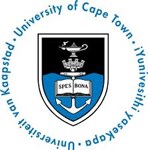UCT research team to map ancient rock city of Petra
The Zamani Research Group of UCT's Geomatics Department is partnering with UNESCO, the Italian National Institute for Environmental Protection and Research, and the Jordanian Department of Antiquities to digitally survey and map the fabled rock city of Petra, between the Dead Sea and Gulf of Aqaba in Jordan.

Emeritus Professor Heinz Rüther heads the team, consisting of Ralph Schroeder, Roshan Bhurtha and Stephen Wessels. The project is part of a 30 month contract, and aims to produce a stability plan using sophisticated surveying and laser-scanning mapping techniques for the geologically fragile World Heritage Site. The UCT team will also produce a virtual tour of Petra and spatially document many of the tombs and temples of Petra.
Rüther's team is known for its heritage documentation skills. They use laser scanning, conventional surveys, global positioning systems (GPS) surveys and photogrammetry to produce geographic information systems (GIS), 3D models and interactive panorama tours of heritage sites.
Mystique lies in inaccessibility
The research group has covered 40 sites in 13 countries and has digitally mapped many of Africa's famous heritage landmarks, from Fort San Sebastian on Ilha de Mozambique, and the fabled Adobe Grand Mosque in Djenné, Mali, to the rock-cut churches of Lalibela in Ethiopia and the complete Valley of the Queens in Luxor, Egypt.
Part of its mystique lies in its inaccessibility. Entrance to Petra is through the Siq (meaning 'crack') - a narrow slot canyon up to 120m high and 1.2km long. It's the team's second visit to Petra following a 2011 trip to conduct a 3D laser scan of the Siq's lower section and the Royal Tombs, including the Urn Tomb.
"Much of the city has been destroyed because of natural weathering and earthquakes," says Rüther. "Using GPS and photogrammetry, we are mapping the walls of the Siq as well as the most important structures in the valley."
Virtual tour of site
There are a number of components to the current operation. They will contribute to the design of the Siq monitoring system, develop a GIS for the entire Petra National Park area, and create 3D computer models of the principal temples and tombs of Wadi Araba and Wadi Farasa, including the Treasury, Royal Tombs, Urn Tomb, Monastery and the Amphitheatre.
All this will be combined in an interactive virtual tour of the site. Honours students from the Department of Computer Science at UCT are contributing to the virtual tour. The partnership requires that they share their skills with their Jordanian counterparts, which they do by including local professionals and students in their field campaigns.